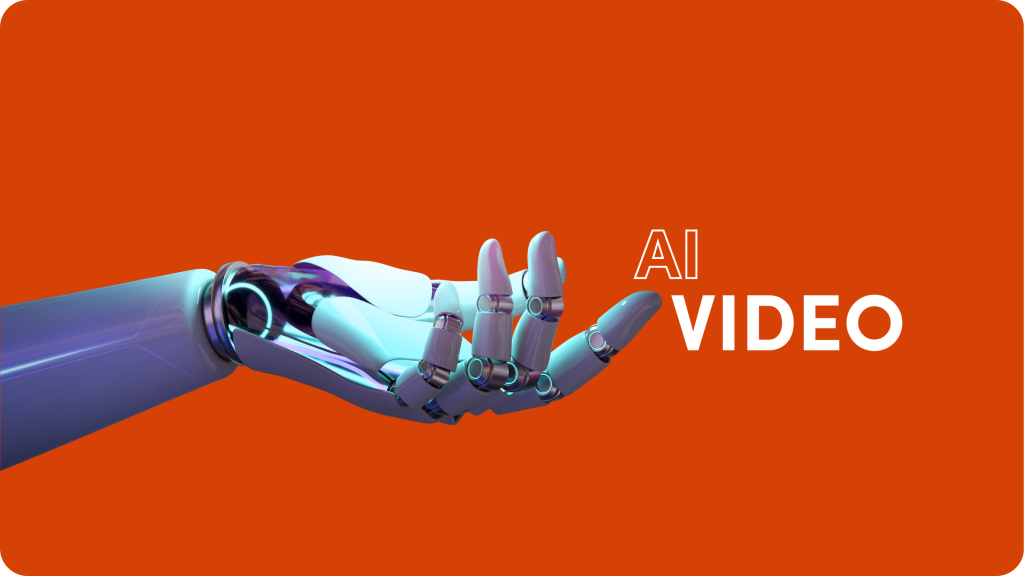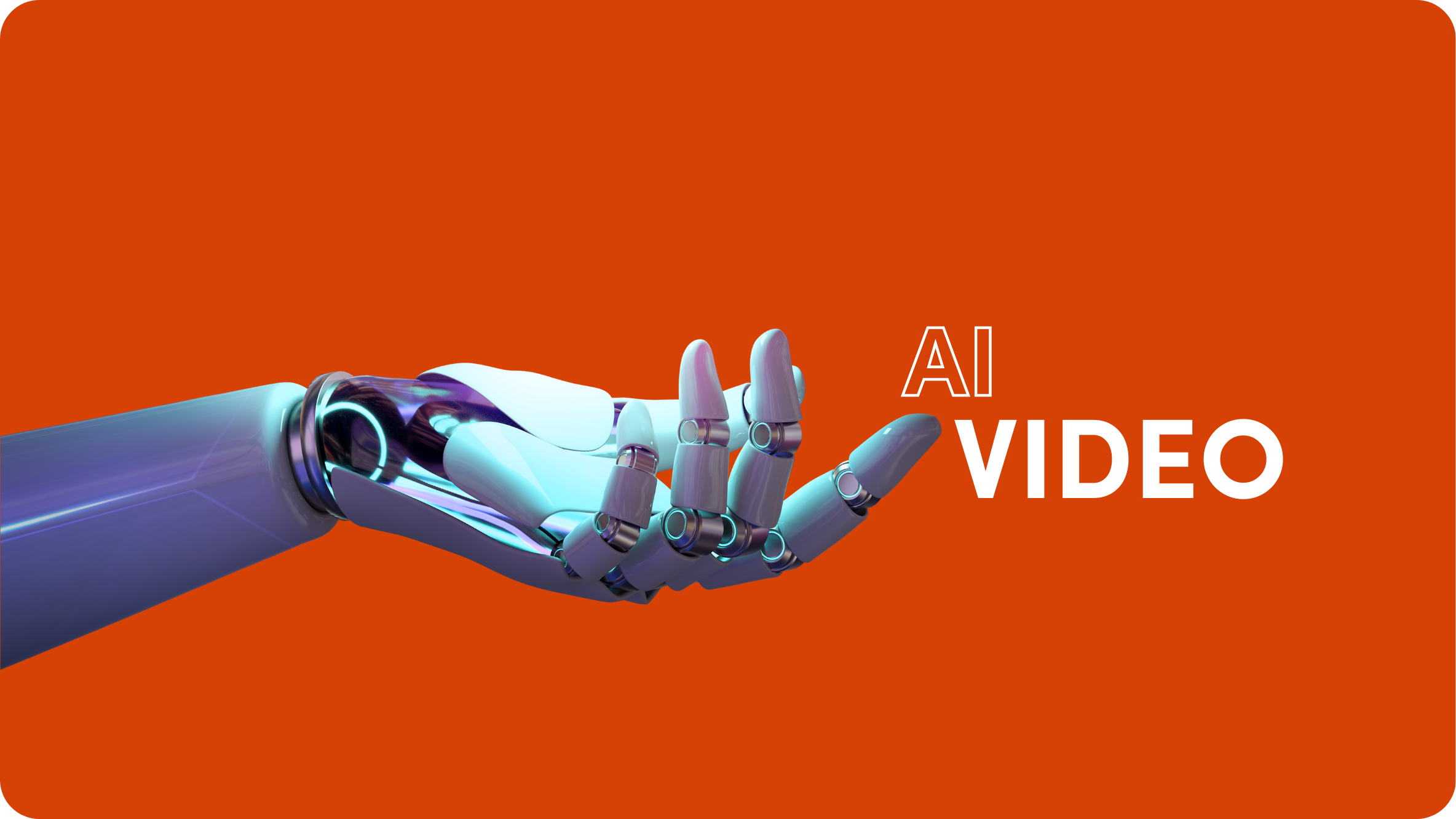5 Best AI Video Generation Tools on the Market Right Now

It seems that every time we blink, some new generative AI tool gets released onto the market. From smart text creators like ChatGPT to evolved TTS (text-to-speech) creators, the human race is putting technology to work. And now, AI video generator tools are making their grand entrance, too. These tools leverage artificial intelligence to automate and enhance video creation, making it easier than ever for creators to produce high-quality, engaging content.
OpenAI’s Sora is the latest earthquake to shake expectations of the future of AI video generation. Some are calling it an “evolutionary leap”. With a market expected to reach US $1.96 billion by 2030, we’re not surprised OpenAI is in on the game. But will their model outpace the others on our list? Let’s examine the top 5 (in our estimation) video gen tools on the market right now.
1. OpenAI Sora
In its essence, Sora transforms your written content into dynamic and imaginative videos, lasting up to 60 seconds. Its standout features are its exceptional consistency and photorealistic video quality. However, what truly captivates online creators is not just the tool itself but its varied applications. For instance, the text-to-speech pioneer ElevenLabs leveraged Sora to enhance a video with their state-of-the-art AI sound effects generator.
This remarkable AI technology is built upon modified versions of existing models, akin to those used in DALL-E 3, but augmented with additional capabilities and customization options. Sora integrates the image generation technology seen in Stable Diffusion with the token-based architecture found in ChatGPT. It produces videos by creating them in a virtual space as 3D patches, which are then processed through a video decompression algorithm to generate output that is easily comprehensible to humans.
OpenAI has disclosed that the model’s training involved a combination of publicly accessible videos, content in the public domain, and copyrighted materials for which licenses were obtained beforehand. While the exact volume of videos used for training is not disclosed, estimates suggest it numbers in the millions. There are also speculations that OpenAI utilized synthetic video content, such as that produced by Unreal Engine 5, to gain insights into the physics of the environments in the video clips it analyzed.
Shifting focus back to its applications, Sora offers a myriad of uses:
- Educational content: Transform mundane instruction manuals into captivating educational videos, making learning more efficient and engaging for your team or customers.
- Remote troubleshooting: Use Sora’s vivid videos to guide your customers through resolving technical issues with your products swiftly and efficiently, eliminating the need for physical demonstrations.
- Rapid prototyping: When you have a product concept that’s difficult to articulate for funding or customer acquisition, Sora can visualize your ideas through video prototypes, bringing your imagination to life.
- Virtual tours: Sora opens up new possibilities for exhibition centers, real estate firms, and travel agencies, among others. It allows the creation of virtual tours, offering potential customers a realistic experience of any location without them needing to be there physically.
2. Runway Gen-2
Runway’s AI-driven creative toolkit includes over 30 tools designed to broaden almost anyone’s creative scope. Its video generation tool, Gen-2, is user-friendly, offers solid quality output and includes features like motion tracking, inpainting, and green screen. Where it falls a little behind is in its price, which is at the higher end.
Despite some limitations in scene generation and preview options, Runway delivers quality videos that can be customized for camera movement and intensity, which means you get a high degree of creative control. Along with this are capabilities like animating still images and converting text to speech, with a variety of AI voices available for creating distinct voiceovers.
To use Gen-2, you need to start with a text prompt (though the platform offers dynamic prompt suggestions), adjust the advanced settings, and then hit the “Generate this” button to engage the AI’s capabilities. The outcome is a personalized Gen-2 cinematograph that embodies your initial concept, ready for download or storage in the Runway assets repository.
Gen-2 is engineered to cater to a spectrum of creative needs through its diverse modes, like Text to Video, Text + Image to Video, Image to Video, Storyboard, and more, and is just one of the tools in the Runway ecosystem. There’s a lot you can do with it and that’s why we’ve ranked it so highly in our list.
Want some visual examples of what you can make with Gen-2?
Take a look:
3. Pika
Pika is another innovative platform that’s revolutionizing the way we craft videos. With a range of methods to create videos, from text-based inputs and imagery to pre-existing footage, it sets itself apart from other tools. And according to its creators, it is an agile and easy way to get high-quality video with minimal effort.
One of the remarkable aspects of Pika is its ability to add beautiful visual effects to videos and output them into the best sizes and formats for social media.
Pika’s skillset extends to converting images into video content by using them as a storyboard and then adding camera dynamics. It also comes with a range of video control tools so that you can edit to get the precise look and feel you’re looking for. With rapid video processing, it also meets the standards of other tools on the market – and it’s cost-effective. And by cost-effective, we mean free, at least while it’s still in beta.
We see some big potential in Pika – especially since it can deliver quality that some of its competitors can’t yet. Check it out for yourself:
4. Synthesia
Synthesia made our list because it claims it’s the best of all AI video generators, and while we don’t necessarily agree that it should top the list, it does come with some impressive features. Synthesia allows for the generation of studio-quality videos complete with avatars and voiceovers in 130+ languages all created by AI. And it lets you create your first video for free.
Like many of the others on our list, Synthesia leverages AI to reduce the costs of video production, like hiring talent, finding locations, or getting video editors on your payroll. The platform allows you to choose an AI persona, input your script in any of the available languages, and get your finished video pretty quickly. Additionally, editing is pretty straightforward and, according to the company, requires as little as 15 minutes to create an instructional video.
Something that also really stands out about this software is that you can export your videos in any format, which means they can be used in all LMSs, web platforms, and web apps.
Wondering about the video quality? It’s not bad at all. Take a look at some of the platform’s capabilities here:
5. Invideo
Invideo’s text-to-video technology transforms written content into dynamic, engaging videos, pretty much as all of the others on our list do. What we love about this software is that it also pulls from its vast library of templates, stock footage, images, and music to automatically generate pretty professional-looking videos.
The process starts when you input your text into the InVideo platform, and this can be anything from a blog post to a news article, script, or even a Facebook post! Then you specify your preferences like theme, style, and tone, choose a template, and you get your video. Although much of the process is automated, InVideo allows you to customize various aspects of your video like text placement, visual elements, different music tracks, and adjust the overall pacing of the video.
Then the video is rendered and ready to go. The platform supports high-quality video outputs that are optimized for sharing across various platforms, including native ads, social media, websites, and email marketing campaigns, which should make content creators happy.
See it in action here:
What’s Next for AI Video Generation?
AI is making remarkable strides, and each tool featured in this article shows a little piece of what generative video technology is capable of. We’re standing at the cusp of a technological revolution. It’s clear that AI video generation tools are not just expanding the creative process but are also democratizing video production. They’re making it possible for a broader spectrum of individuals and businesses to tell their stories in visually beautiful ways without extensive resources or technical expertise.
Looking ahead, the future of AI video generation holds exciting possibilities. We anticipate more advancements in AI’s realism, customization, and interactivity, which will allow us to cross new frontiers in storytelling, education, advertising, and entertainment. And this journey into the world of AI video generation is just the beginning. The tools listed above are just the foundation for what’s coming next.




